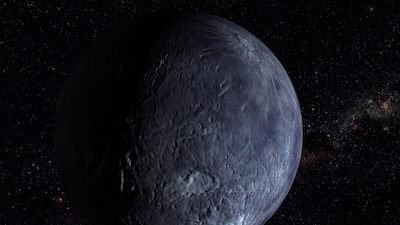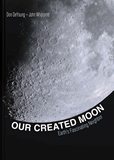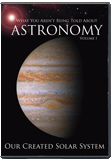
Sun and Planets Built Differently Says Nasa
Genesis captures solar wind and blows a hole in the nebular hypothesis.
News Source
NASA’s Genesis spacecraft traveled about a million miles from earth to collect solar wind particles. The samples sent home were “the first material collected beyond the moon.” Unfortunately, the cargo capsule crashed in Utah in 2004. Researchers have spent seven years decontaminating and analyzing the samples. Their results, published in Science, have surprised many.
According to the Jet Propulsion Laboratory, “The data revealed slight differences in the types of oxygen and nitrogen present on the sun and planets. . . . The implications could help determine how our solar system evolved.”
The “nebular hypothesis” is believed by most secular scientists to explain the origin of the solar system. They maintain that our solar system formed 4.6 billion years ago from a cloud of dust and gas. Since everything formed from the same raw materials, they expected the chemistry to be the same throughout. But the isotope ratios found in these solar wind particles do not match those on earth.
Oxygen and nitrogen, like all elements, exist in more than one isotopic form. The isotopes of a given element behave the same way chemically but differ in the number of neutrons per atom. Most oxygen is oxygen-16, but some is oxygen-17 or oxygen-18. Likewise, most nitrogen is nitrogen-14, but some is nitrogen-15 or nitrogen-16.
Compared to the earth, the moon, and meteorites, the sun is high in oxygen-16. The differences in nitrogen isotopes are even greater: “when compared to Earth's atmosphere, nitrogen in the sun and Jupiter has slightly more N-14, but 40 percent less N-15. Both the sun and Jupiter appear to have the same nitrogen composition.”
“The implication is that we did not form out of the same solar nebula materials that created the sun—just how and why remains to be discovered,” said Kevin McKeegan, author of one of the reports in Science.
“These findings show that all solar system objects, including the terrestrial planets, meteorites and comets, are anomalous compared to the initial composition of the nebula from which the solar system formed,” according to Bernard Marty, author of the other report. “Understanding the cause of such a heterogeneity will impact our view on the formation of the solar system.”
Creationists have long pointed to problems with the nebular hypothesis, yet most secular scientists have clung to the nebula from which they knew we sprang despite the aberrant physics it demands. Perhaps these new discoveries from Genesis will lead at least a few to take another look at the eyewitness account of our origins in Genesis.
Further Reading
For More Information: Get Answers
Remember, if you see a news story that might merit some attention, let us know about it! (Note: if the story originates from the Associated Press, FOX News, MSNBC, the New York Times, or another major national media outlet, we will most likely have already heard about it.) And thanks to all of our readers who have submitted great news tips to us. If you didn’t catch all the latest News to Know, why not take a look to see what you’ve missed?
(Please note that links will take you directly to the source. Answers in Genesis is not responsible for content on the websites to which we refer. For more information, please see our Privacy Policy.)
Recommended Resources

Answers in Genesis is an apologetics ministry, dedicated to helping Christians defend their faith and proclaim the good news of Jesus Christ.
- Customer Service 800.778.3390
- © 2024 Answers in Genesis







